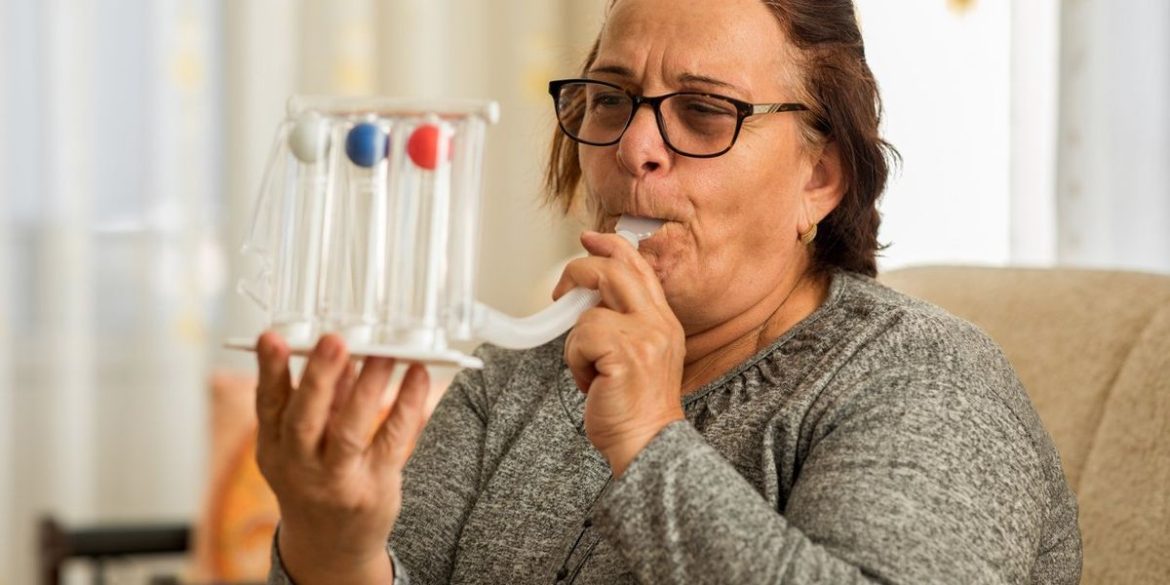Almost 16 million Americans are living with a chronic obstructive pulmonary disease, or COPD, diagnosis. Millions more don’t even know they have it.
The COPD Foundation, a nonprofit that promotes research, advocacy and awareness to stop COPD and similar conditions, estimates that the number of Americans who are affected by COPD is as high as 30 million, some of whom are misdiagnosed with other breathing conditions (like asthma).
COPD encompasses multiple chronic lung diseases, including emphysema and bronchitis. Breathlessness is the most common COPD symptom, and sufferers can also experience constant fatigue and a chronic cough with or without mucus. Other symptoms can include wheezing or loud breathing, shortness of breath at rest or with exercise, and chest pain.
Although most COPD cases are
caused by cigarette smoking, the association of COPD with smoking is one of the reasons the disease is underdiagnosed, said Jean Wright, M.D., MBA, CEO of the COPD Foundation.
“There is a misconception that COPD is just a smoker’s disease or that it only affects older people,” Wright said. “Younger individuals can have COPD and not even know it. COPD can be caused by many factors, including environmental exposures, infections in childhood, exposures to chemicals or dust in the workplace, or genetics. Smoking is the number one cause of COPD, but there are many others, too.”
Who is most affected by COPD?
Certain groups have a higher risk of developing COPD and experience worse outcomes with the disease. Factors affecting COPD rates include:
Rural/urban environment: Of the nearly 16 million Americans living with a COPD diagnosis, 2 million live in areas defined as rural. Hospitalization rates and emergency room visits for COPD are also higher in rural areas.
“These individuals often have limited access to healthcare and specialized COPD care, such as pulmonary rehabilitation programs,” Wright said. “People living in rural areas often have more financial stress, which limits their ability to access quality healthcare.”
Racial background: Black, American Indian and Alaska Native individuals have higher rates of COPD than white individuals, while Asian and Hispanic individuals have lower rates of COPD than their white counterparts, and genetics can play a role in COPD development. High rates of other health conditions, like diabetes, high blood pressure and asthma, which are more common in certain races, can also contribute to racial disparities in COPD.
Some studies suggest that menthol cigarette smokers with COPD have more severe symptoms than non-menthol cigarette smokers. Research has also shown links to targeted marketing of menthol-flavored cigarettes in Black communities, and 8 out of 10 Black American smokers use menthol cigarettes.
Social determinants of health: Individuals without a college degree and with lower incomes have a higher incidence of COPD. Other causes of health disparities can be tied to disadvantages that come from systemic barriers to healthcare or jobs or homes in areas with higher levels of environmental pollutants that may contribute to higher rates of COPD in certain populations.
Sex/gender:Women are more likely to have COPD than men, and more women die from COPD than men. This may be because of smaller airways in women, the effects of hormones such as estrogen, marketing of tobacco toward women, and missed diagnoses because of less recognition of the disease in women.
Read: Women and COPD >>
Age: Diagnoses and death rates are higher in older patients. More than 8 out of 10 COPD deaths occur in people over 65.
Sexual orientation/gender identity: Higher rates of COPD are being reported among LGBTQ+ individuals, with studies suggesting a correlation with higher rates of smoking in LGBTQ+ communities.
Living with COPD
Although there’s no cure for COPD, treatments are available to help improve quality of life, making it important to get an accurate diagnosis as soon as possible.
People experiencing the symptoms listed above, especially if they currently smoke or smoked in the past, can ask their healthcare provider (HCP) for a COPD test. People who’ve had significant exposure over time to air pollution should also consider getting tested.
HCPs will test a patient’s lung function through a spirometry test, which involves breathing into a tube attached to a machine. The machine, known as a spirometer, will calculate how much air you blow out in a second, and how much you blow out entirely. Additional tests might also be needed to confirm a diagnosis, such as an X-ray or CT scan.
Treatments, such as steroids, biologics, inhalers and nebulizers, can help minimize COPD symptoms, giving patients more freedom to breathe and increased energy. While treatments won’t reverse existing lung damage, they can make it easier for patients to get through their daily activities. Treatments can also help cut down on hospitalizations and other healthcare visits that result from breathing difficulties or other issues.
COPD patients are also strongly encouraged to quit smoking or vaping if they haven’t already. Staying current on vaccinations can help patients avoid further respiratory damage from diseases like the flu or pneumonia.
People living with COPD should also consider pulmonary rehabilitation programs, which provide comprehensive support in a clinical setting to help them manage the physical and mental aspects of their condition. A program could include physical exercise, a dietary plan, mental health counseling and medication management.
In more severe cases, surgical procedures could be needed to remove damaged lung tissue, or people may need to carry supplemental oxygen.
“The earlier someone is diagnosed with COPD, the quicker they can receive the care they need,” Wright said. “Treating COPD at the earliest stages can help to slow the progression of the disease. COPD often becomes worse over time, but with the right treatment, the disease can be better managed.”

